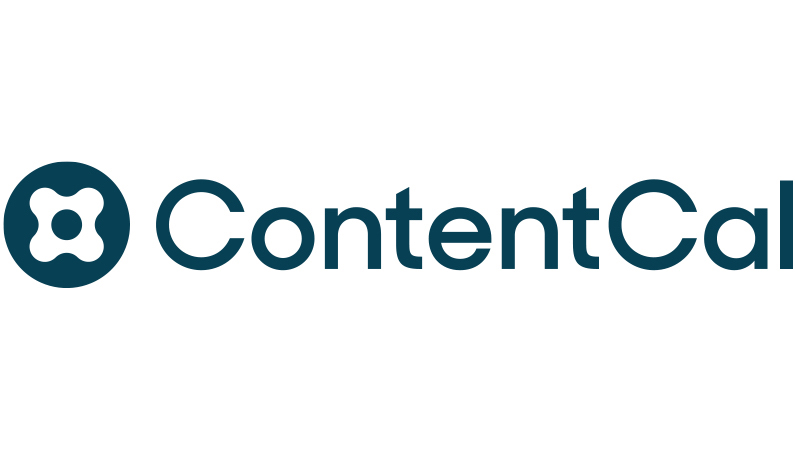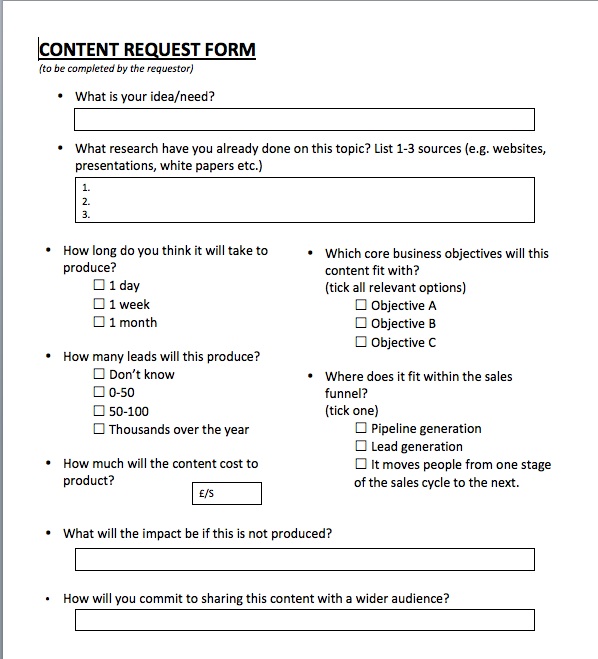![9 Questions to Help You Prioritize Content Creation [Template]](https://www.liveseo.com/wp-content/uploads/2021/12/9-Questions-to-Help-You-Prioritize-Content-Creation-Template.png)
More. more. more.
At many companies, the demand for content has increased exponentially in recent years. Yet, you can’t just say no. Or can you?
By taking a strategic process to content requests, you can more confidently say no, maybe, and yes to every inquiry received. Here’s some help to make that happen.
Create a content request form
To help prioritize your content requests, consider developing a content request form that you share across all departments that might be asking you for content.
To help prioritize #content requests, consider developing a content request form that’s shared across all departments, says @GBalarin via @CMIContent. Click To Tweet
Often requestors only have a vague idea of what their needs are when they ask for content to be created. The request form helps them drill down to their most essential needs — which will help you identify possible ways to incorporate them into your existing content plan or to minimize the revision process so that you can free up time in your schedule to produce additional content. Moreover, the improved communication facilitated by the form helps you produce content that is more targeted, more appropriate, and better able to deliver the kind of results its requestor expects. Marketers also would be wise to use the form themselves, to help flesh out and prioritize their own ideas for content creation.
It’s essential for your organization to have a content marketing mission statement — and for everyone who submits requests to know what this is. For instance, CMI’s mission is to advance the practice of content marketing. If you receive content requests that do not support your mission, it may not be worth your effort and time.
If you receive content requests that do not support your mission, it may not be worth your effort and time, says @GBalarin via @CMIContent. Click To Tweet
Keep your content request form short — one page at the most, if possible. Here are some questions you should include:
- What is your idea/need? Keep it brief and give a catchy title to your content idea/need as soon as possible. It’s likely that your content piece will be known by this name, moving forward — at least internally — regardless of what the final title actually is.
- What research have you already done on this topic? Ask requestors to list three sources of research they have already done. Doing this provides two main benefits: First, requestors may already have sources in mind that they would not otherwise have thought to share; and second, it reminds the requestor that the writing process involves research too, which makes for better content.
- How long do you think it will take to produce? Often, requestors misunderstand the process and the amount of work involved in creating content. Asking this question provides an opportunity to educate requestors, and starts the negotiation process so both sides can come to an agreement on the expected deadline.
- How many leads do you expect this piece will produce? This is particularly helpful for requests that come from sales. Not all content should be expected to generate leads — especially if it’s educational content that sits at the top of the funnel. But if your requestor does have an answer in mind, so much the better to set the right expectations.
- How much will the content cost to produce? When calculating the content’s production costs, make sure the requestor is including budget expectations for design and layout costs, as well as printing costs (if applicable) and the writer’s time.
- Which core business objectives does this fit with? While it’s great to have content that is fun, or interesting, or engaging, it should also align with business objectives — particularly if the content is being expected to meet key performance indicators (KPIs).
- Where does it fit within the sales funnel? Content designed to be used at different stages of the sales funnel should be promoted in different ways. Moreover, the key messages and the level of product (or service) information will differ. It helps to know up front what purpose the content is meant to serve.
- What will the impact be if it’s not produced? What will happen if you cannot fulfill the request? Will the world end, will it critically affect a campaign, or will their boss just be unimpressed? This question helps establish whether a given request is for need-to-have content or would simply be nice-to-have.
- How will you commit to sharing this content with a wider audience?A piece of content is only valuable if it is consumed and shared. This question lets requestors know that they will be encouraged to spread the word about the content across their own social networks — after all, hopefully they’ll be proud of the final piece and will want to share it, as well.
Work with requestors when they fill out a form for the first time. Help them understand what is involved in creating the content and identify where it should and can be used. For example, they may want to create a white paper when the content would actually be more appropriate for a blog. Explaining the whys and how’s in advance not only helps educate your colleagues, but also helps them understand the value of your expertise and role in the organization.
Use it as a reference doc. That way, everyone knows what to expect of the final content. It keeps you all on the same page, literally.
ADVERTISEMENT
Your 2022 Content Creation Tool Kit
All the tips, tactics, and templates you need to create and execute the perfect 2022 content plan – and the perfect content to fill it with. Download your 2022 content creation toolkit from our sponsor, ContentCal.
Prioritize, but don’t dismiss urgent requests
Developing a content calendar that has the flexibility to include some unexpected activities that add value and are in keeping with the business goals and objectives is a smart way to set your content strategy in motion. But what happens when you receive desperate or last-minute requests to create content that doesn’t fit in your content plan? What is the difference between important content and urgently needed content?
This old phrase comes to mind: “Lack of planning on your part does not constitute an emergency on my part.”
This is where you need to learn the art of saying no to content requests that simply don’t fit within your overall business objectives, that aren’t clear enough in their intention, or that are simply requested too late in your publication cycle for you to be able to do a good job with them.
Learn the art of saying no to #content requests that don’t fit within your overall business objectives, says @GBalarin via @CMIContent. Click To Tweet
When it comes to “urgent” requests from other parts of the business that demand content resources, the key is to keep ego and emotion out of it. At the end of the day, content creation is a business function that should help get clear, trustworthy, and valuable messages out to customers and prospects. Don’t dismiss a request just because you’re having a tiff with that employee, or your business groups have differing objectives.
Sometimes there’s value in pulling a content rabbit out of a hat to meet an urgent need — not only does it make you a valuable content creation resource, it also builds cross-functional relationships. And, you never know, it might even result in that huge sale that keeps your content team in work — and in demand — for another year, while boosting your reputation: a win-win situation.
HANDPICKED RELATED CONTENT:
Cover image by Joseph Kalinowski/Content Marketing Institute


![HubSpot's 2025 State of Blogging Report [Data from 500+ Marketers]](https://www.liveseo.com/wp-content/uploads/2025/02/HubSpots-2025-State-of-Blogging-Report-Data-from-500-Marketers.webp-300x300.webp)


